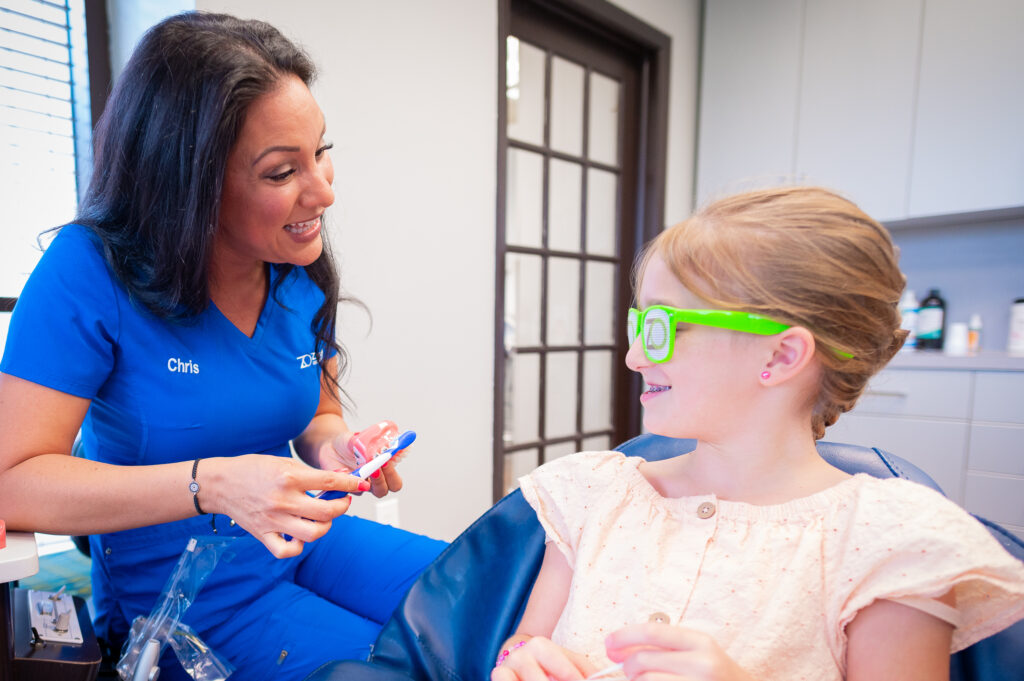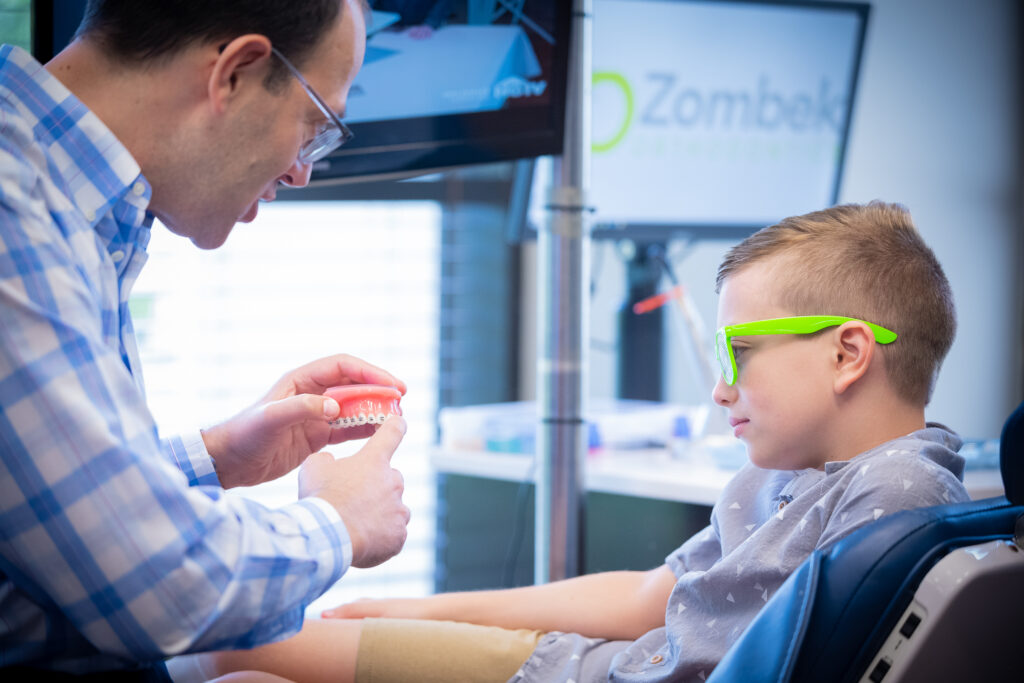Braces do amazing things for crooked teeth, but sometimes, they need some help. Not everyone has room for straight teeth, often because other teeth move into empty spaces when baby teeth/primary teeth come out. Others need to maintain a wider palate for teeth to come in.
Zombek Orthodontics utilizes several tools to prepare you for braces treatment. We use these tools to yield the best results possible. We want you to have a smile you’re proud to show off and healthy teeth that will last you a lifetime!
Space maintainers are exactly what they sound like. They maintain space in your child’s mouth so the permanent teeth can erupt correctly. There are several different types of orthodontic spacers that perform different functions.
Many space maintainers are bonded to the teeth and are not removable. Some are removable, but with children, fixed ones generally work best.

There are three main types of orthodontic spacers: the lower lingual holding arch (LLHA), the Nance appliance, and the trans palatal arch (TPA).
The LLHA is a fixed appliance made up of two stainless still bands that wrap around the first molars on the lower teeth. The bands are bonded to the molars, and a wire runs along the back and inside of the lower teeth. Unlike braces or retainers, this wire doesn’t put pressure on the teeth. These devices are custom-made to fit your child’s teeth.
The purpose of this device is to keep the lower molars from shifting forward. Shifting molars would keep permanent teeth from coming in correctly. This appliance ensures that the permanent teeth have plenty of room to erupt.
The LLHA appliance is often used when the child loses their baby teeth too early or when the teeth show signs of crowding. The device stays in until the permanent teeth are all in.
The device can also be used to hold molars in their proper places while the other teeth come in and support the molars if they are loosened by gum disease or genetic issues. The device can also reduce the additional space left when the baby teeth fall out because baby molars are longer than permanent molars, but there needs to be space for a second premolar, which baby teeth don’t have.
The Nance orthodontic appliance is very similar to the LLHA, but it fits on the upper teeth instead of the lower teeth. Like the LLHA, the Nance Arch is custom-made for the child’s mouth and palate.
The Nance Arch generally serves the same purpose as the LLHA but is a bit different. Instead of a stainless steel wire running around the back of the teeth, two wires coming from the molar bands on each side of the mouth run to an acrylic button that rests on the palate behind the front teeth. This button holds the molars in place without pressure.
Because of the acrylic button, your child may have trouble speaking normally for a few days until they get used to the device. Once their tongue has gotten used to the device on the roof of the mouth, your child should lose any lisp or speech impediment caused by the device.
What is a TPA in orthodontics? The Transpalatal Arch attaches to the upper molars with a wire that stretches between the bands instead of around the inside of the teeth. The wire and bands maintain the width of the palate, ensuring the dental arch is wide enough for all of the permanent teeth to come in correctly.
The TPA appliance is often used during Phase I of two-phase braces treatment. Phase I and Phase II braces are used with children to stave off more severe dental issues. Phase I is used to prepare the mouth for braces in Phase II. That preparation includes widening the palate or stabilizing the teeth as they erupt.

Your child will need to make a few changes to their diet and how they brush and floss their teeth once a space maintainer is placed. Here are a few tips to help your child with their space maintainer.

Space maintainers aren’t necessary for every patient. We will be able to tell you during your first visit whether your child will need any space maintainers for their orthodontic treatment.
Space maintainers can help keep your child’s orthodontic issues from getting worse. These devices help keep your child’s teeth from becoming overcrowded and crooked. Sometimes, the space maintainers work well enough that your child doesn’t need braces later or only needs braces for a short time.
Will space maintainers help your child? You can learn about space maintainers in Weston, FL, or Hollywood, FL, by scheduling an appointment with Zombek Orthodontics!

 This site’s strategy, design, photo & video were created by the marginally-above-average folks @ Clear Partnering Group.
This site’s strategy, design, photo & video were created by the marginally-above-average folks @ Clear Partnering Group.